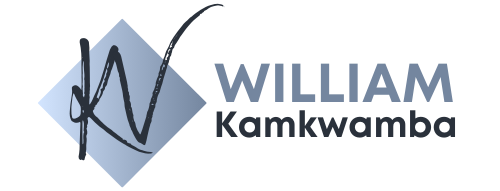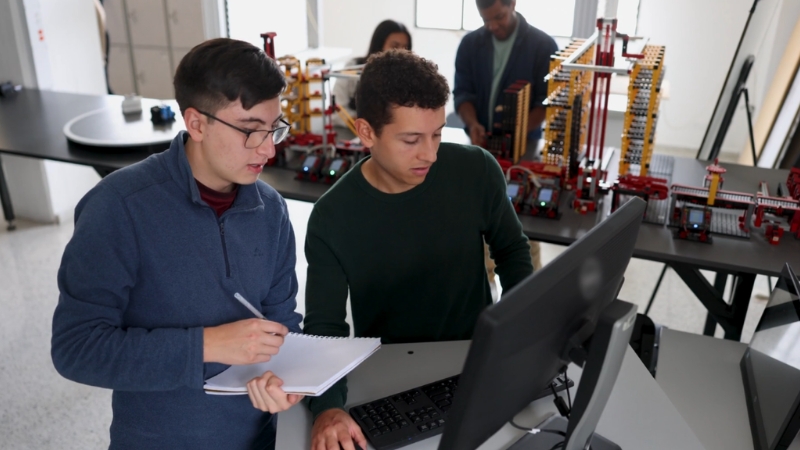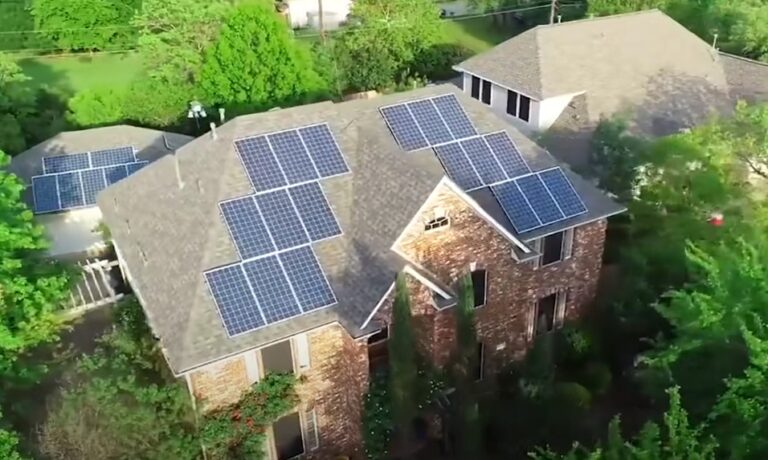Engineering changes fast. New materials show up in labs every year. New algorithms ripple through entire fields before textbooks catch up.
Standards mature to match safety, manufacturing, and reliability demands that did not exist a generation ago.
If you are working at an advanced undergraduate level, building a master’s thesis, running experiments as a PhD candidate, or pushing industry R&D, you cannot afford scattered learning. You need a system that protects your time and sharpens your attention.
Today, we prepared a structured look at the resources that actually matter for advanced engineering education and research, written in a way that helps you combine them into a more coherent workflow.
You will see how open courseware, online degrees, digital libraries, citation databases, preprint servers, skill-building programs, and professional societies fit together. The goal is to help you build depth without wasting effort.
Open Courseware and Advanced Online Programs
Online learning used to be an extra. Now it is a core part of how engineers build knowledge. Many of the strongest resources are free, permanent, and built on decades of high-level academic work.
MIT OpenCourseWare and Related Platforms
MIT OpenCourseWare is still the gold standard for openly accessible engineering education. Nearly the entire curriculum is available for free. You get syllabi, lecture notes, assignments, exams, and occasionally full lecture recordings.
Mechanical engineering, electrical engineering, civil engineering, materials science, nuclear engineering, computation, and aerospace are all heavily represented. MIT has a massive engineering footprint.
Roughly 55 percent of students are in engineering degrees, and engineering research supports more than half of the institute’s sponsored projects. That scale directly shapes the size and depth of its OCW library.
If you want to use OCW effectively, skip the habit of picking random courses. Go straight to department landing pages. For example:
Look for high-numbered courses or sections marked as graduate. Pull every reading list into your own notes. Track down the journals and textbooks through your university library.
OCW becomes a structured reference rather than a single course. You can always cross-check the OCW reading lists against courses offered in your own department.
National Platforms Like NPTEL
The National Programme on Technology Enhanced Learning (NPTEL) is another heavyweight platform. While MIT OCW excels as an open library, NPTEL blends lectures with structured assignments, weekly quizzes, and optional proctored exams.
NPTEL is a collaboration between India’s IITs and IISc, which means the engineering depth is significant. You will find advanced courses on engineering statistics, numerical methods, algorithms, data science for engineers, cyber-physical systems, and a wide range of system design topics.
A single Indian university had more than 1,000 students sit for NPTEL exams in one recent semester, and dozens ranked in the upper percentile bands nationwide. That kind of participation is rare for a public platform.
If you are doing research, NPTEL is especially useful when you need problem-solving discipline. Take an NPTEL course that overlaps your thesis or project area and treat the weekly assignments as timed drills.
Even if you skip the proctored exam, you will pick up speed and clarity. Supervisors often use NPTEL as a baseline tool for graduate students from varied academic backgrounds.
Qui Si Risolve and the Value of Disciplined Problem-Solving
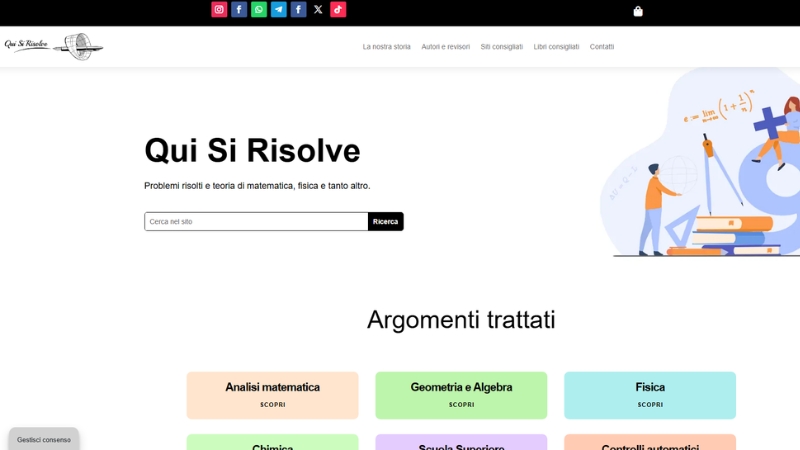
Engineers who work at an advanced level eventually run into a quiet but stubborn obstacle. Theory is everywhere, but clean, well-structured practice material is rare.
Qui Si Risolve fills that gap with a focus on rigorous exercises and clear explanations across core scientific subjects that feed directly into engineering work.
What makes it valuable is not the range of topics, but the way each topic is treated. The platform leans on tight reasoning, stepwise development of ideas, and a level of numerical and analytical detail that supports real study rather than casual browsing.
If you are preparing for graduate-level courses that rely heavily on analysis, linear algebra, mechanics, or control concepts, you can use it as a daily practice bench.
Researchers who manage long-term projects often fold resources like Qui Si Risolve into their weekly routine.
When a derivation collapses because a forgotten lemma or algebraic identity gets in the way, a few minutes with targeted practice material can save an entire afternoon. It is equally useful when switching fields.
An electrical engineer moving toward structural health monitoring, or a mechanical engineer entering robotics, can rebuild their mathematical footing in an incremental, repeatable way.
The platform also helps supervisors. Many advisers hand out focused exercise sets when onboarding graduate students from varied undergraduate backgrounds. A resource that offers consistent, well-crafted practice makes it easier to standardize expectations without relying entirely on textbooks.
Used alongside major open courseware platforms, Qui Si Risolve becomes a reinforcement layer rather than a standalone curriculum.
You take the conceptual arc from OCW or NPTEL, then use problem sets and concise theory refreshers from Qui Si Risolve to push the ideas deeper. Over time, that produces the kind of mathematical fluency that advanced engineering research quietly depends on.
MOOCs and Online Master’s Programs
Coursera, edX, and Stanford Online sit at the next level of structure. They offer targeted courses as well as full degrees.
Coursera
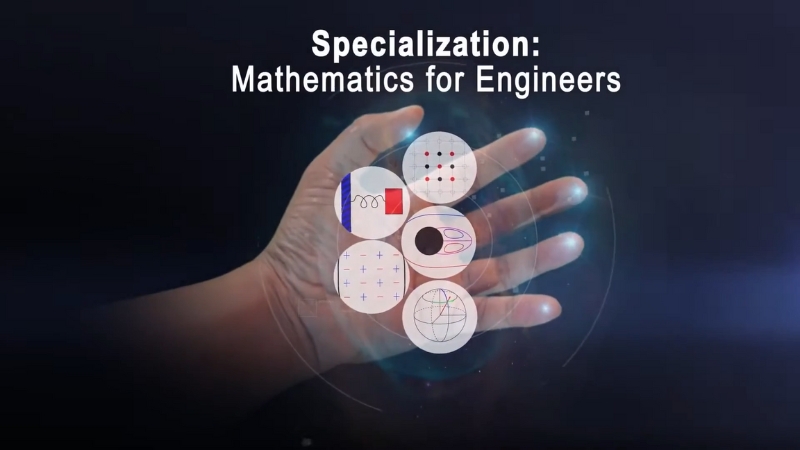
Coursera carries many advanced engineering specializations. A popular series is “Mathematics for Engineers”, with tens of thousands of learners enrolled. That gives you a sense of the scale.
Coursera is ideal for filling gaps in math, control theory, numerical methods, robotics, semiconductor devices, and other areas that require guided progression.
edX online master’s
edX hosts online master’s programs in several engineering fields. Programs run from one to three years, depending on your schedule.
A 2020 dataset from the U.S. National Center for Education Statistics placed average engineering master’s tuition at $21,000 USD per year on campus and roughly $13,700 USD for fully online programs. That excludes living costs, which makes online degrees appealing for working engineers.
Stanford Online and the Honors Cooperative Program
Stanford Online, available through multiple portals, offers remote master’s options for engineering.
The Honors Cooperative Program (HCP) lets working professionals enroll part-time in selected Stanford engineering degrees. It is a direct way to continue formal graduate study without stepping away from industry work.
Making Advanced MOOCs Fit Into Research
Online courses only help when you fold them directly into your research workflow. If you move into computational fluid dynamics, take an advanced numerical methods course first. If you shift toward robotics, enroll in a modern control or estimation series.
For full online master’s programs, treat the coursework exactly as you would treat in-person study. Set fixed weekly blocks and avoid pushing assignments aside as optional.
Digital Libraries for The Primary Engineering Literature
Once you leave coursework behind and push into research, your bottleneck becomes access to high-quality literature. Three or four digital libraries dominate the engineering world.
IEEE Xplore
View this post on Instagram
IEEE Xplore is the core repository for electrical engineering, electronics, computing, and many algorithmic fields.
It holds more than six million full-text documents and serves more than 24 million downloads per month. It includes journals, magazines, conference proceedings, standards, eBooks, and online courses.
Signal processing, communications, power systems, embedded systems, networks, and control theory depend heavily on IEEE literature. Graduate courses often assign papers from IEEE Transactions. PhD students in EE, CS, and systems engineering rely on it for most of their literature reviews.
If you want to work efficiently, master advanced search filters. Narrow down by subject area, publication type, conference name, and year. For standards-driven work, track IEEE standards directly in Xplore rather than relying on third-party summaries.
ACM Digital Library
ACM Digital Library handles the software-heavy side of engineering. That includes human-computer interaction, programming languages, data engineering, distributed systems, and parts of machine learning.
ACM publishes around 70 journals and magazines and hosts hundreds of conferences. The collection integrates millions of records through a large guide to computing literature.
Conference-driven fields benefit the most. Engineers working in areas where conferences push the research frontier faster than journals, such as machine learning, security, and big systems design, often treat ACM DL as their primary source.
ScienceDirect
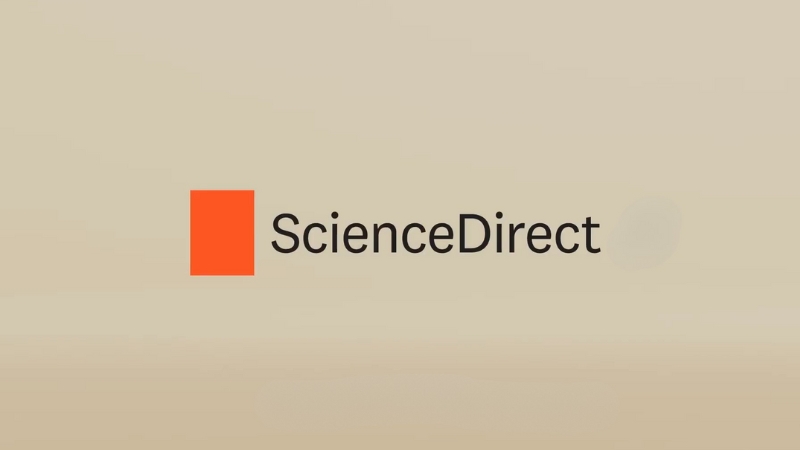
ScienceDirect is a massive full-text database from Elsevier. It contains more than 18 million publications from over 4,000 journals, along with about 30,000 eBooks.
It is particularly strong in mechanical engineering, structural engineering, materials, applied physics, and process engineering. If you are working in a multidisciplinary territory that mixes engineering with life sciences, ScienceDirect often provides the deepest coverage.
SpringerLink
SpringerLink is the home for Springer Nature’s books, journals, reference works, and protocols. It excels in monographs and graduate-level textbooks across mechanical, civil, electrical, and computational engineering.
If you need a full book-length treatment, such as a structural engineering handbook or a finite element textbook, SpringerLink is usually your best option.
Many engineers combine IEEE Xplore and ACM DL for the most recent papers, then use SpringerLink for deeper conceptual chapters.
Scholarly Search Engines and Citation Databases
Digital libraries give you content, but you also need tools that help you map, search, and evaluate entire areas of research.
Google Scholar
@google How to use #GoogleScholar ✍️ #Research #Essay #Homework ♬ Weeknd style 80s synth city pop(1090347) – Gloveity
Google Scholar is the most flexible free discovery tool. Its index has been estimated in independent studies at around 160 to 165 million documents. That includes journal papers, books, patents, and case law.
Because it crawls open formats, the metadata is not always clean. Duplicate entries show up often. Citation counts may be inflated by misattributed records.
Use Google Scholar for fast harvesting and early keyword exploration. For formal evaluation of citation metrics or journal rankings, confirm the numbers in a curated database.
Web of Science Core Collection
Web of Science is a curated citation database known for stability and historical depth. Coverage runs back to 1900 in some records. It focuses on science, engineering, medicine, and materials.
Researchers use it when they need structured, reproducible literature mapping. Systematic reviews often rely on Web of Science because the journal lists are stable and transparent.
It is also useful for citation analysis, highly cited paper identification, and mapping collaboration networks.
Scopus

Scopus from Elsevier indexes roughly 94 million records, 2.4 billion citations, and nearly 29,000 titles. Scopus updates daily and includes extensive metadata on affiliations, funding, and publication types.
It is strong in engineering, technology, and applied sciences. Because it includes more conference proceedings and a wider range of journals, it appeals to engineers who want broad coverage. Many institutions subscribe to both Scopus and Web of Science to balance precision and breadth.
Preprint Servers and Open Repositories
Peer-reviewed journals remain the gatekeepers for formal academic work. Still, many fields move quickly through preprints.
arXiv
arXiv is the main open preprint server for physics, mathematics, computer science, electrical engineering, and systems science. It holds nearly 2.4 million scholarly articles and has been operating since 1991.
In theoretical physics and mathematics, arXiv is the default submission path. Papers appear months before journal publication.
In engineering fields such as control theory, signal processing, robotics, and power systems, the electrical engineering and systems science sections have become increasingly active.
Use arXiv to track early developments. Set alerts for categories and keywords. If a new method shows potential for your area, find the preprint, then follow up once the final journal version appears. That combination gives you speed without sacrificing quality control.
Computational and Data Skills for Modern Engineering Research
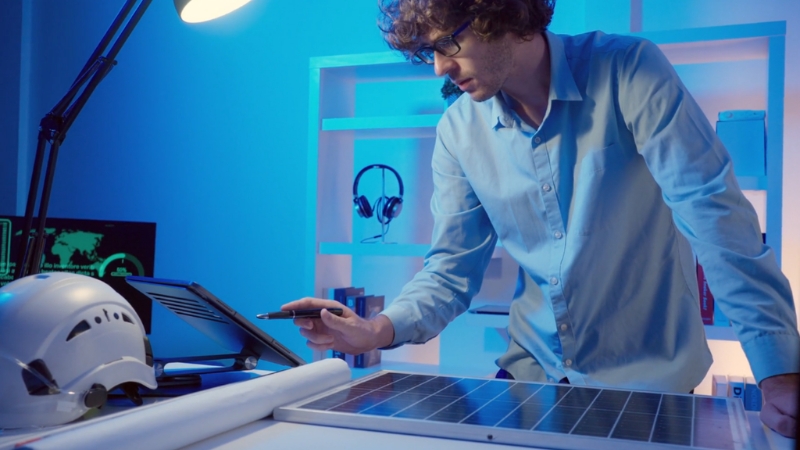
Modern engineering research involves code, data, reproducibility, and workflow management. Many researchers approach these areas with patchwork scripts and scattered notes. That quickly becomes a risk when experiments scale.
The Carpentries and Software Carpentry
The Carpentries and Software Carpentry teach research computing skills through two-day hands-on workshops.
The curriculum covers version control, shell skills, Python or R scripting, structured data handling, reproducible runs, and project organization. The teaching approach is evidence-driven and strongly emphasizes inclusive learning environments.
For engineering graduate students, these workshops are one of the fastest ways to reach competence in tools like Git and Jupyter. Many universities run internal Carpentries events specifically for engineering programs.
If you want a practical rule: take a Carpentries workshop early in your degree. Use the skills immediately by structuring your thesis repository with documented dependencies, automated scripts, and consistent naming.
Professional Societies and Expert Networks
Engineering education does not stop with coursework. It flows into communities that publish journals, release standards, host conferences, and build networks.
IEEE
IEEE is both a society and a publisher. Membership gives you access to IEEE Xplore, conference discounts, grants, scholarships, and local chapter events.
One IEEE Antennas Society alone allocated more than 600,000 USD in 2025 for student and early career grants. That gives you a sense of the scale behind IEEE’s support for young engineers.
If you start graduate work in electrical or computer engineering, join early. Conferences and local chapter seminars tightly align with real industry practice. You will also gain easier access to standards, which matter a great deal in fields like power systems, safety-critical hardware, and wireless communications.
ASME, ASCE, AIChE and Other Societies
Mechanical, civil, and chemical engineering each have their own anchor societies.
Societies matter because they combine formal literature with community practice. Conferences often showcase real engineering problems that never reach journal pages. Webinars and short courses help licensed engineers maintain continuing education credits.
Putting Everything Together
The challenge is not a lack of resources. It is organizing them in a way that helps you stay focused.
Example Pathway for A Graduate Student
Imagine you are starting a master’s project on structural health monitoring using machine learning.
The combination helps you move from theory to literature to practice without losing time.
Example Pathway for An R&D Engineer in Industry
If you are already working in the industry:
Final Notes

Advanced engineering education and research run on layers. Open courseware gives you depth for free. Online degrees help you formalize that depth. Digital libraries provide access to the frontier.
Citation databases map the terrain. Preprint servers keep you close to the early signals. Hydraulic engineering students often lean on these layers to track new modeling methods for flow analysis and infrastructure design.
Skill workshops help you execute your work cleanly. Professional societies tie it all together through standards, journals, and conferences.
Once you know which layer you are using at each point in a project, your decisions become easier. You will know when to pull a graduate-level course, when to scan a preprint, when to retrieve a standard, and when to prepare a full conference submission.
